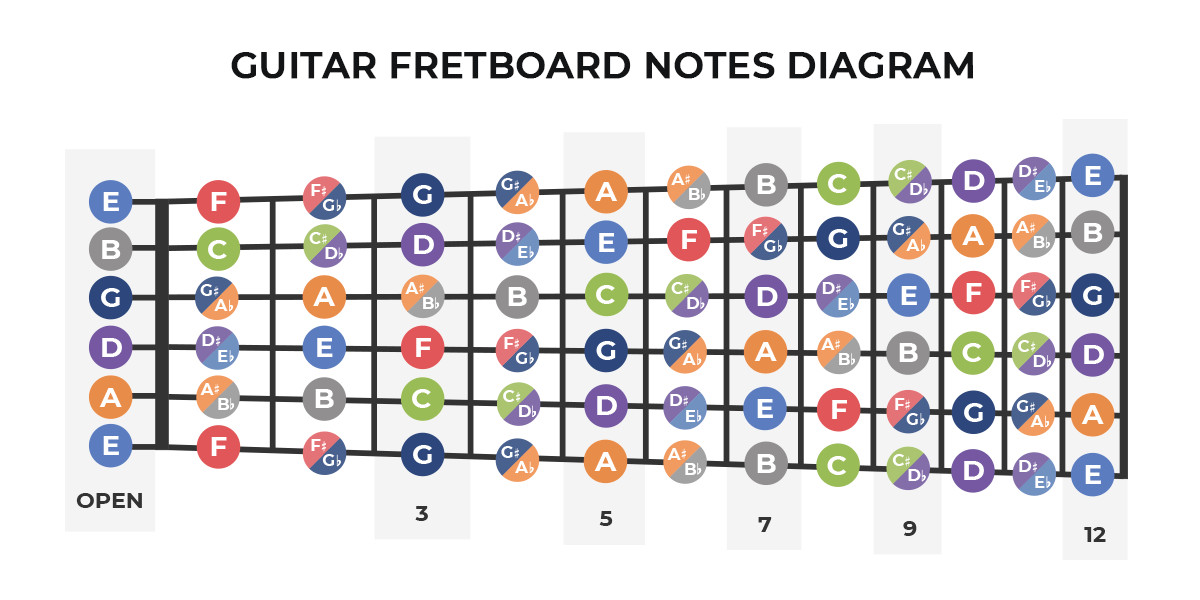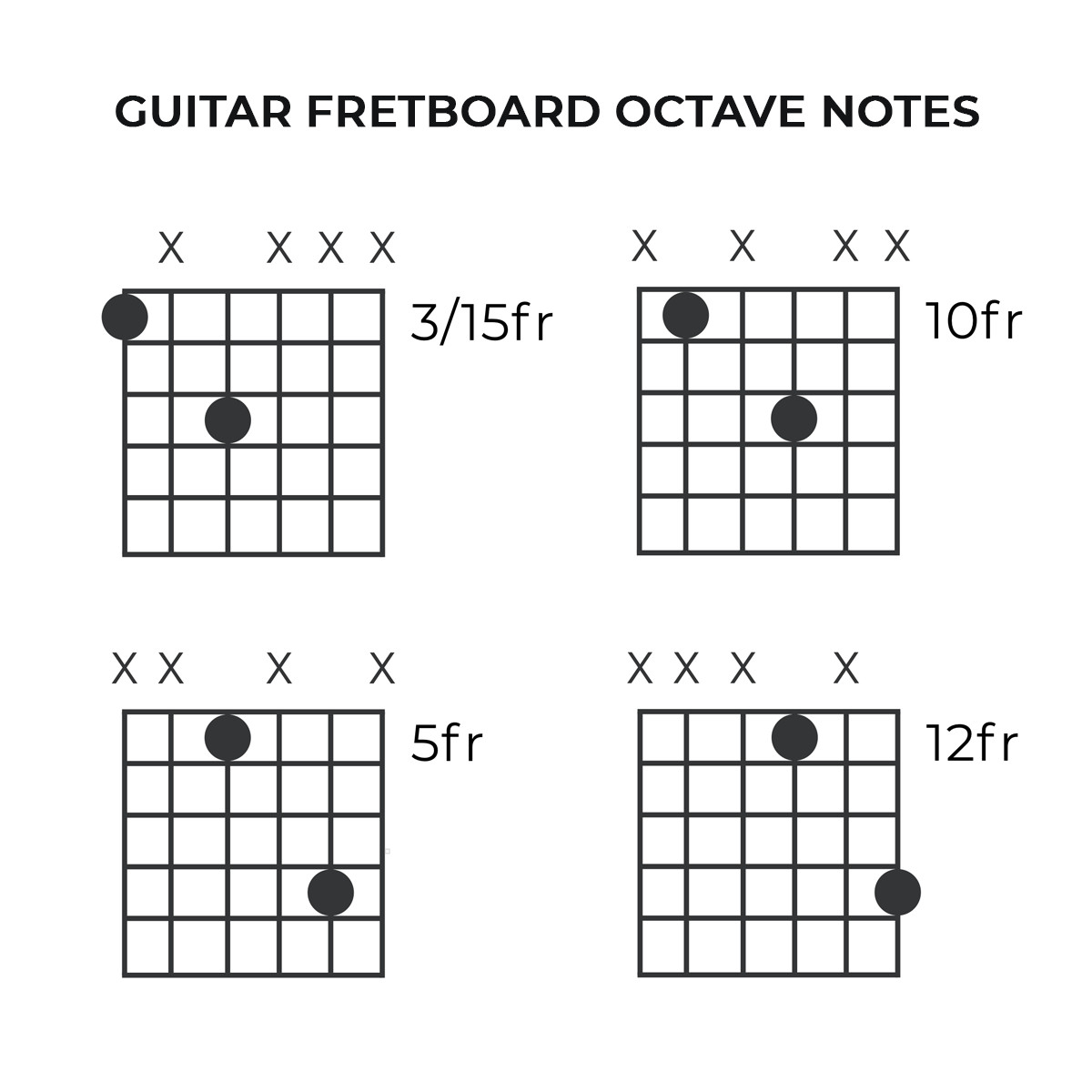As a budding guitarist, you might find yourself comfortably strumming chords and even playing along to your favorite songs using chord charts and tablature. And that’s fantastic progress! But if you’re looking to truly elevate your guitar skills and unlock a deeper understanding of music, learning the notes across the guitar neck is an essential step. Understanding Guitar Notes On Neck is not just about knowing names; it’s about gaining a comprehensive grasp of music theory and opening up new avenues for your playing.
For many beginners, the prospect of memorizing all the notes on the fretboard can seem overwhelming. However, with the right approach and some effective strategies, this task becomes much more manageable and incredibly rewarding. Let’s explore how you can confidently navigate the fretboard and master those crucial guitar notes on neck.
Understanding the Guitar Neck: Your Musical Map
Before diving into memorization techniques, let’s familiarize ourselves with the landscape we’ll be exploring: the guitar neck, also known as the fretboard. The fretboard is the long wooden piece on your guitar where the metal frets are embedded. These frets divide the neck into segments, each representing a semitone, or half step, in musical terms. Running along the fretboard are the strings. A standard guitar has six strings, each tuned to a specific pitch.
To visualize all the guitar notes on neck, a fretboard diagram is an invaluable tool.
 Guitar Fretboard Notes Diagram
Guitar Fretboard Notes Diagram
You’ll notice in the diagram that some notes have two names, like C#/Db or D#/Eb. This is due to enharmonic equivalence – these are different names for the same pitch. Think of it like synonyms in language; they represent the same note but are used depending on the musical context. For instance, the note at the 6th fret of the A string can be called either D# or Eb, depending on the key and musical situation. Both names refer to the exact same guitar note on neck.
Tip #1: Harness the Power of the Chromatic Scale
The chromatic scale is your secret weapon for deciphering the guitar notes on neck. In Western music, the chromatic scale includes all 12 unique musical notes within an octave. Starting on any note, and moving up by semitones (one fret at a time on the guitar), you play each of these 12 notes before returning to the octave.
The chromatic scale starting from C is:
C – C#/Db – D – D#/Eb – E – F – F#/Gb – G – G#/Ab – A – A#/Bb – B – C
This sequence repeats endlessly, regardless of your starting note. Each step in the chromatic scale corresponds to moving one fret up or down the guitar neck.
So, how does this knowledge help you learn guitar notes on neck?
Let’s say you know that the 3rd fret of the low E string is a G (as shown in the diagram). If you want to find the note at the 6th fret on the same string, you can count up three semitones from G using the chromatic scale: G, G#/Ab, A, A#/Bb. Therefore, the 6th fret of the low E string is A#/Bb.
By memorizing the chromatic scale, you create a framework for understanding the relationships between guitar notes on neck. Once you know the name of one note, you can easily figure out the notes around it by simply counting frets using the chromatic scale.
Tip #2: Master Octave Shapes to Navigate the Fretboard
Understanding octaves provides another powerful shortcut for learning guitar notes on neck. An octave is the interval between one musical note and another with double its frequency. Notes an octave apart share the same letter name but sound higher or lower in pitch.
On the guitar, octave patterns are consistent and easily visualized. For example, play the open D string. Now, play the 12th fret of the same D string. As you can see in a guitar notes on neck diagram, both are D notes, but the 12th fret D is an octave higher.
This consistent octave relationship is incredibly useful. If you know that the 5th fret of the A string is a D note, you can quickly locate other D notes in different octaves across the fretboard by recognizing octave shapes.
Here are common octave shapes you can use to find guitar notes on neck:
 Guitar Octave Notes
Guitar Octave Notes
By memorizing these shapes, you can efficiently jump around the fretboard and identify guitar notes on neck without having to count every fret individually. If you know a note in one location, you can instantly find its octave counterparts.
Tip #3: Focus Your Efforts: Start with the Low E and A Strings
Learning all guitar notes on neck at once can feel like trying to drink from a firehose. A more effective approach is to break down the fretboard into smaller, more manageable sections. A great strategy is to initially focus on memorizing the notes on the low E and A strings.
Why these strings? Because the low E and A strings are fundamental to playing many guitar chords, especially barre chords. In barre chords, the root note (the note that defines the chord) is often found on either the low E or A string.
For example, if you know that the 8th fret of the low E string is a C note, you instantly know where to position your root finger for a C barre chord rooted on the low E string. Similarly, knowing that the 3rd fret of the A string is also a C note is crucial for playing A-string root barre chords.
Once you have a solid grasp of the guitar notes on neck on the low E and A strings, you can gradually expand your knowledge to the other strings. This focused approach prevents overwhelm and builds a strong foundation.
Interestingly, once you’ve mastered the low E string, look at the high E string. You’ll notice a pattern – the notes on the high E string correspond to the same note names as the low E string for each fret, just two octaves higher! This duplication provides a helpful shortcut and reinforces your understanding of guitar notes on neck.
Making it Stick: Consistent Practice is Key
Learning guitar notes on neck is a journey, not a race. Consistent, focused practice is the key to making this knowledge stick. Dedicate a few minutes each day to fretboard memorization. Here are a few effective practice techniques:
- Note-naming drills: Pick a fret and string randomly and try to name the note without looking at a diagram. Check your answer afterward.
- Chromatic scale practice: Play the chromatic scale up and down different strings, naming each note as you play it.
- Octave shape exercises: Pick a note and find all its octaves across the fretboard using the octave shapes.
- Song-based learning: As you learn new songs, actively identify the notes you are playing on the fretboard.
By incorporating these practice methods into your routine, you’ll gradually internalize the guitar notes on neck and find yourself navigating the fretboard with increasing confidence and ease.
Unlock a New Level of Guitar Playing
Learning guitar notes on neck is an investment in your musical future. It may seem challenging at first, but with consistent effort and the right strategies, you can master the fretboard and unlock a deeper understanding of music. This knowledge will enhance your ability to learn songs, write music, communicate with other musicians, and ultimately, become a more proficient and versatile guitar player.
Ready to take your guitar playing to the next level?
Explore the fretboard and start learning guitar notes on neck today! And for a fun and interactive way to practice your guitar skills, try Yousician Premium+ free for 7 days. Sign up and start your musical journey now!
Start your free trial
